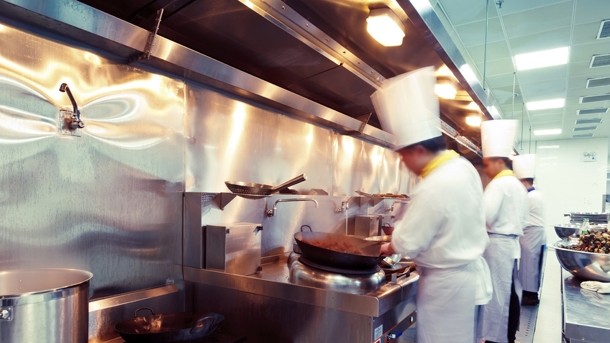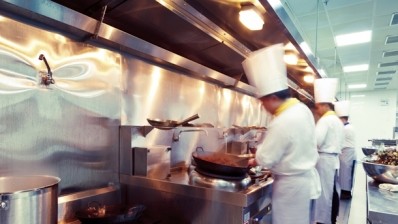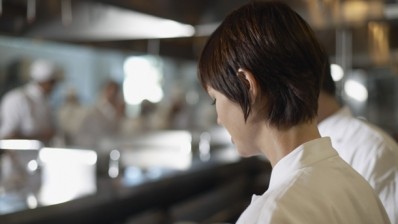Are TV cooking shows contributing to the chef shortage?

Ask the general public where they got their first real impression of the restaurant industry and most will likely point to Gordon Ramsay turning the air blue at head waiter Jean-Philippe Susilovic on the first series of Hell’s Kitchen.
But while many in the industry would argue that this portrayal is now unrealistic, how far does today's television make it seem otherwise?
This week double Michelin-starred chef Andrew Fairlie made headlines after warning that the perceived ‘macho’ culture of kitchens was putting young people off entering the trade.
The hospitality industry is facing a major staffing crisis, with restaurants struggling to fill almost half of all skilled chef vacancies.
But the Gleneagles chef warned that TV shows were making things worse by proving off-putting to young people.
“When I started my career, kitchens could be brutal, violent places,” he said. “However, over the last 30 years to its great credit the industry has taken many steps to remove this aggression.
“Perceived long, unsociable hours, in addition to the impact of the confrontational nature of some TV cooking competitions, have contributed to the negative outlook of some younger, emerging chefs."
Hollywood treatment
Fairlie’s comments hint at the shouty chef stereotype recently immortalised by Bradley Cooper in the film Burnt. The movie received a scalding by critics, with The Guardian’s Peter Bradshaw despairing that it ‘buys in to the concept that rudeness and temper tantrums are the signs of passion and flair – as opposed to being a fantastically tiresome prat’.
Though the film boasted both Gordon Ramsay and Marcus Wareing as ‘consultants’, how far is this caricature a true portrayal?
While kitchens remain high pressure, chefs for the most part seem to feel that the tempers have cooled.
Dan Doherty, executive chef at Duck & Waffle, told BigHospitality last year that the restaurant sector was ‘a victim of its own success’ in terms of its televised image.
“[Television] shows restaurants as very Michelin-heavy, hard-core and intensive with everyone working long hours, and I don’t think that’s a true reflection of the industry,” he said.
“I think young kids are maybe scared to get in to the business and think its for the SAS elite-type people. I don’t think that’s true. I’m not slating Michelin restaurants, I’m just saying they’re only 0.1 per cent of the industry, there’s more to it.”
Former Michelin-starred chef Paul Heathcote told BigHospitality that though an ‘aggressive’ culture had once been prominent, things had changed over his career.
“I’m 55 now and when I started cooking at 16 I wasn’t in particularly good places, they were very male orientated and fairly aggressive environments,” he said.
“When I got in to Michelin star restaurants and classical five-star hotels in London they were still tough places to work and fairly male-dominated, but I don’t see that now in the same way as I did 30 years ago.”
Gradual change
One of the more recent examples of the change is at Barrafina Adelaide Street, the no-reservations tapas bar which took the top stop at the National Restaurant Awards in June.
Executive chef Nieves Barragan Mohacho told BigHospitality last year that the restaurant’s positive culture was key to its success.
“At Barrafina we are a collective,” she said. “Front-of-house and kitchen are all in the same team. We all respect each other and there’s no difference between us, and I think the customers can feel it.”
Mohacho was the first female executive chef to win National Restaurant of the Year, and she admitted that the shifting gender balance in kitchens had done a lot to alter the ‘macho’ nature of restaurants.
She said: “It’s changed so much and I’m so pleased. Now you get ten CVs and at least three are female and it’s great. The kitchen should be fun and the girls can be friendlier. I think it’s great to have more women in the industry.”
Unrealistic expectations
But despite the shift in attitudes, Heathcote said he understood the ‘frustration’ of his colleagues at the unrealistic mindset of young people coming in to the kitchen after being influenced by TV.
Midsummer House chef-patron Daniel Clifford told BigHospitality last year that part of the restaurant industry’s problem was the ‘fashion’ for 22 and 23 year old chefs to open their own restaurants with little experience, only to fail shortly afterwards.
“Many of my contemporaries say that the industry has a lack of skills and young people who are influenced by television and have a different impression of the catering industry and the reasons they want to come in to it,” said Heathcote.
“Television distorts everything, but it has influence for good and for bad. I think it can glamorise the industry, but that’s the same for most jobs. People might think its 9-5, and it probably is if you want to be near the bottom of the rung of the ladder, but if you’re high flying you’ll work all hours. Like a lot of other careers catering can be tough.”
So what needs to change?
Fairlie said that restaurants didn’t ‘shout loud enough’ about the talents of young chefs to encourage them to stay in the industry.
“There are pressures in any kitchen, especially in top end restaurants, but that can be part of the attraction,” he said.
“The fact is, that with the huge increase in the number of restaurants, there are countless jobs out there. I don’t know any kitchen in the UK that isn’t looking for staff.”
Doherty said that the industry needed to do more to reach out to young talent.
"I don't think enough people know about the industry and how diverse it is," he said. "You don't have to be in a three Michelin starred restaurant, you can be doing other things."


































